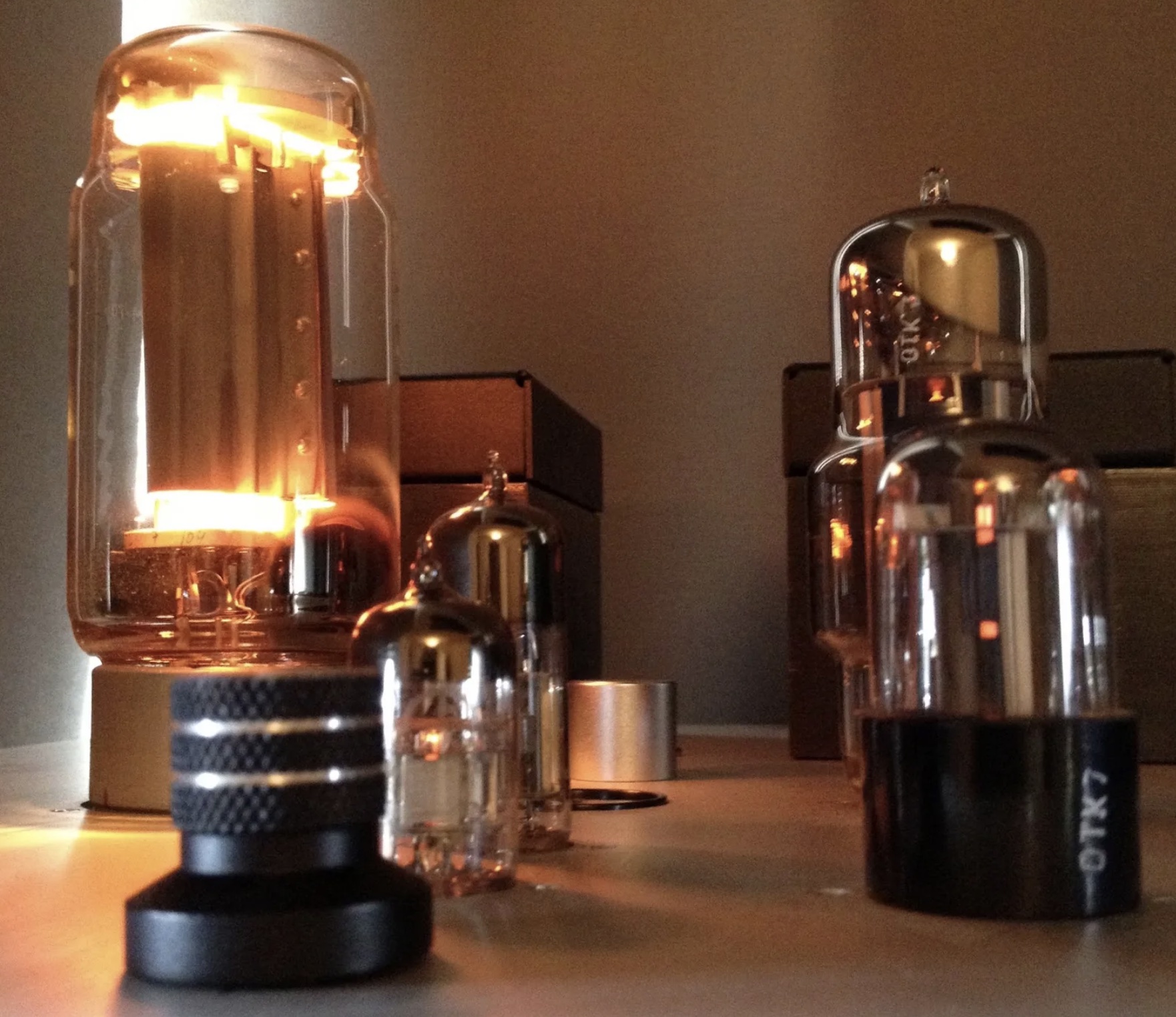A gas-filled tube, also known as a discharge tube, is an arrangement of electrodes in a gas within an insulating, temperature-resistant envelope. Although the envelope is typically glass, power tubes often use ceramics, and military tubes often use glass-lined metal. Gas tubes are tubes whose electrical characteristics are substantially influenced by the pressure and composition of gas contained inside.

Gas-filled tubes exploit phenomena related to electric discharge in gases, operating by ionizing the gas with applied voltage to start electrical conduction. Both hot cathode and cold cathode type devices are encountered. Depending on application, either the glow from the gas or the electric arc or electric glow discharge may be the desired function.
Hydrogen
Hydrogen is used in tubes used for very fast switching, e.g. some thyratrons, dekatrons, and krytrons, where very steep edges are required. The build-up and recovery times of hydrogen are much shorter than in other gases. Hydrogen thyratrons are usually hot-cathode. Hydrogen (and deuterium) can be stored in the tube in the form of a metal hydride, heated with an auxiliary filament; releasing hydrogen by heating such storage element can be used to replenish cleaned-up gas, and even to adjust the pressure as needed for a thyratron operation at a given voltage.
Deuterium
Deuterium is used in ultraviolet lamps for ultraviolet spectroscopy, in neutron generator tubes, and in special tubes (e.g. crossatron). It has higher breakdown voltage than hydrogen. In fast switching tubes it is used instead of hydrogen where high voltage operation is required. For a comparison, the hydrogen-filled CX1140 thyratron has anode voltage rating of 25 kV, while the deuterium-filled and otherwise identical CX1159 has 33 kV. Also, at the same voltage the pressure of deuterium can be higher than of hydrogen, allowing higher rise rates of rise of current before it causes excessive anode dissipation. Significantly higher peak powers are achievable. Its recovery time is however about 40% slower than for hydrogen.
Noble gases
Noble gas discharge tubes; from left to right: helium, neon, argon, krypton, xenon
Noble gases are frequently used in tubes for many purposes, from lighting to switching. Pure noble gases are employed in switching tubes. Noble gas filled thyratrons have better electrical parameters than mercury-based ones. The electrodes undergo damage by high-velocity ions. The neutral atoms of the gas slow the ions down by collisions, and reduce the energy transferred to the electrodes by the ion impact. Gases with high molecular weight, e.g. xenon, protect the electrodes better than lighter ones, e.g. neon.
Helium is used in helium-neon lasers and in some thyratrons rated for high currents and high voltages. Helium provides about as short deionization time as hydrogen, but can withstand lower voltage, so it is used much less often.
Neon has low ignition voltage and is frequently used in low-voltage tubes. Discharge in neon emits relatively bright red light; neon-filled switching tubes therefore also act as indicators, shining red when switched on. This is exploited in the decatron tubes, which act as both counters and displays. Its red light is exploited in neon signage. Used in fluorescent tubes with high power and short length, e.g. industrial lighting tubes. Has higher voltage drop in comparison with argon and krypton. Its low atomic mass provides only a little protection to the electrodes against accelerated ions; additional screening wires or plates can be used for prolonging the anode lifetime. In fluorescent tubes it is used in combination with mercury.
Argon was the first gas used in fluorescent tubes and is still frequently used due to its low cost, high efficiency, and very low striking voltage. In fluorescent tubes it is used in combination with mercury. It was also used in early rectifier tubes; first thyratrons were derived from such argon-filled tubes.
Krypton can be used in fluorescent lamps instead of argon; in that application it reduces the total energy losses on electrodes from about 15% to 7%. The voltage drop per lamp length is however lower than with argon, which can be compensated by smaller tube diameter. Krypton-filled lamps also require higher starting voltage; this can be alleviated by using e.g. 25No value assigned argon-krypton mixture. In fluorescent tubes it is used in combination with mercury.
Xenon in pure state has high breakdown voltage, making it useful in higher-voltage switching tubes. Xenon is also used as a component of gas mixtures when production of ultraviolet radiation is required, e.g. in plasma displays, usually to excite a phosphor. The wavelength produced is longer than with argon and krypton and penetrates the phosphors better. To lower the ionization voltage, neon-xenon or helium-xenon are used; above 350 torr, helium has lower breakdown voltage than neon and vice versa. At concentrations of 1% and less of xenon, the Penning effect becomes significant in such mixtures, as most of xenon ionization occurs by collision with excited atoms of the other noble gas; at more than few percents of xenon, the discharge ionizes xenon directly due to most energy of the electrons being spent on direct ionization of xenon.
Penning mixtures are used where lower ionization voltage is required, e.g., in the neon lamps, Geiger-Muller tubes and other gas-filled particle detectors. A classical combination is about 98 - 99.5% of neon with 0.5 - 2% of argon, used in, e.g., neon bulbs and in monochrome plasma displays. Wikipedia, Gas-filled tube
See Also
11.15 - Indig Numbers - Inert Gases and Octave Position
14.25 - Dominant is Light of Electrical Spark
16.14 - Thermionic and gaseous state diodes
Atomic Clusters
Browns Gas
Ether
Gas-Plasma-Gas Transformation
Inert Gas
Lingasarira
Noble gas
Plasma
The Inert Gases
vacuum tube
Water Gas
